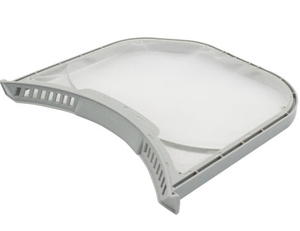
All categories
Featured selections
Trade Assurance
Buyer Central
Help Center
Get the app
Become a supplier

(80 products available)

















































Dryer lint filters are essential for every dryer to trap the lint produced during drying. Without these filters, the lint could build up and cause a fire hazard. Lint filters also help improve the dryer’s efficiency and reduce drying times. These filters are designed to be cleaned after every cycle to avoid any lint build-up. A clean dryer lint filter is just as important as a clean dryer vent because lint can cause a blockage in both cases. The following are some of the common types of dryer lint filters:
Screen Filters
Screen filters are the most common type of dryer lint filters. They are made from a fine mesh that catches the lint. The mesh is mounted on a plastic or metal frame and easily pops out of the dryer’s door. Screen filters are simple and efficient at trapping lint. They are also easy to clean and maintain. To clean a dryer filter screen, simply scrape off the lint or wash it with soapy water. Screen filters are found in most household dryers.
Mesh Filters
Mesh filters are similar to screen filters, but they have a coarser texture. The coarser texture traps larger pieces of lint, while the fine mesh behind traps the smaller lint. These filters provide an efficient air separation and prevent lint build-up within the dryer. Unlike the screen filters, mesh filters are not found in most household dryers. They are mostly used in commercial dryers.
Tray Type Filters
Tray-type filters are made of a series of interlocking trays that collect lint during the drying cycle. These trays provide a larger surface area to capture lint. Like screen filters, tray-type filters are easy to remove and clean. They are also more common in commercial dryers.
Advanced Filters
Advanced filters have a multi-layered or cyclone design for enhanced lint separation. They use more complex dryer lint trap cleaning systems to improve lint collection and airflow. Sometimes, advanced filters have a self-cleaning option that automatically removes the trapped lint. These filters are found in high-end dryer models.
A clean dryer lint filter is a handy tool for any home. It has useful features that help improve safety, save time, and promote environmental sustainability.
A dryer lint filter is made to catch the lint that's created when clothes tumble dry. Lint is quite flammable, so dryer screens are very important for preventing dryer fires. If a lint screen gets full, it can cause the dryer to overheat and even catch fire. Over time, lint screens can get worn out and need to be replaced.
Dryer screens are made from a variety of materials, and their mesh density can differ. This affects how much lint they catch and how durable they are. Some dryer screens may also come with added features like being easy to clean or being fire retardant. It's essential to inspect a dryer screen regularly to see if it needs to be replaced. The filter replacement is necessary if the screen is damaged and no longer catches lint or if it's causing the dryer to overheat or malfunction.
When picking a dryer lint filter for many consumers, functionality, compatibility, and ease of cleaning are essential considerations. These are a few things to consider when selecting these filters.
Functionality. Select a filter that effectively removes lint and other debris from the dryer's exhaust. To ensure proper airflow and reduce the risk of fire, search for filters with fine mesh screens or multiple-layered filtration.
Compatibility. Make sure the filter is suitable for the dryer's make and model. Although some filters are universal, others are specific to particular brands or dryer models. A compatible filter will perform adequately and ensure a correct fit.
Ease of Cleaning. Choose a filter that is easy to clean and maintain. Look for removable or washable filters that can be rinsed off under running water. Avoid filters that need harsh chemicals or complicated cleaning procedures.
Replacement Frequency. Take into account how often the filter will need to be changed or cleaned. While some filters are designed for long-term use, others may need to be replaced more frequently. A dryer vent lint filter's long-term maintenance expenses might be influenced by its replacement frequency.
Reviews and Recommendations. Read filter reviews and get recommendations from other users to get a sense of its performance and durability. Look for filters praised for their efficient lint capture and longevity.
Cost. Cost is a primary factor for many buyers in deciding which dryer lint filter to purchase. Set a budget and weigh the filter's initial cost against its long-term maintenance and replacement costs.
Q: How often should a dryer lint filter be cleaned?
A: It's best to clean the lint filter after every load to prevent lint buildup.
Q: Besides cleaning the lint filter, are there any other dryer maintenance tasks?
A: Yes, other important maintenance tasks include cleaning the dryer vent and ductwork periodically to ensure proper airflow and prevent lint buildup.
Q: Can a clean lint filter prevent all dryer hazards?
A: While a clean lint filter reduces the risk of lint fires, it's essential to clean the vent and lint trap regularly to minimize other hazards.
Q: Are there any tools or products specifically designed for cleaning dryer lint filters?
A: Yes, there are lint brush tools available that can help remove lint trapped in the fibers of the lint filter.
Q: Can a dryer work without a lint filter?
A: Lint filters are an essential part of a dryer's operation. They help prevent lint buildup, which can pose a fire hazard. Lint also protects the dryer's motor from lint clogging it. Without a lint trap, a dryer cannot work without one.